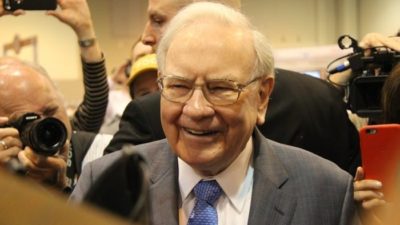Building a beginner portfolio is a delicate balance of risk and reward. Once you've figured out what proportion of your assets you want to invest in shares, you'll need to invest that allocation.
Here we take a look at 8 exchange traded funds (ETFs) to build your beginner portfolio.
What is investing?
When most people think of investing, they imagine spending hours painstakingly picking individual shares. Then spending yet more hours monitoring their shares, buying and selling, all in an effort to outperform the market.
Even professional investment advisors struggle to outperform the market most of the time. Instead, it's often more efficient to try to match the market, knowing that over the long term it has a record of good returns.
Why ETFs?
This is where ETFs come in. ETFs are often based on an index, for example, the S&P/ASX 200 (INDEXASX: XJO), so will mimic the returns of that index. The ASX 200 is just one index, or market, in the investable universe. The S&P 500 is another.
Because the corresponding ETF provides exposure to all the securities in an index, it provides automatic diversification. ETFs can therefore be a great way to put together a sound beginner portfolio. Using a range of ETFs can add greater diversity and interest.
The ASX index ETF
An ASX index ETF gives you coverage of the top 200–300 shares on the ASX, in proportion to their market capitalisation. These ETFs provide broad diversification at low cost.
The Betashares Australia 200 ETF (ASX: A200) provides exposure to the largest 200 companies listed on the ASX, based on market capitalisation. The fund returned 19.23% in the year to 31 October. Distributions are paid quarterly and management fees are 0.07% per annum.
Top holdings include Commonwealth Bank of Australia (ASX: CBA) (7.9%), CSL Limited (ASX: CSL) (6.6%), BHP Group Ltd (ASX: BHP) (6.0%), Westpac Banking Corp (ASX: WBC) (5.6%), National Australia Bank Ltd (ASX: NAB) (4.7%), Australia and New Zealand Banking Group (ASX: ANZ) (4.3%), Woolworths Group Ltd (ASX: WOW) (2.7%), Wesfarmers Ltd (ASX: WES)(2.5%), Macquarie Group Ltd (ASX: MQG) (2.4%), and Telstra Corporation Ltd (ASX: TLS) (2.3%).
The iShares Core S&P/ASX 200 ETF (ASX: IOZ) tracks the S&P/ASX200 Accumulation Index before fees and expenses. The fund returned 19.10% in the year to 31 October. Distributions are paid quarterly and management fees are 0.09% per annum.
Top holdings include Commonwealth Bank (7.81%), CSL (6.88%), BHP (6.13%), Westpac (4.63%), National Australia Bank (4.10%), ANZ (3.94%), Woolworths (2.83%), and Wesfarmers (2.61%).
The Vanguard Australian Shares Index ETF (ASX: VAS) tracks the return of the ASX 300 before taking into account fees, expenses, and tax. The ETF returned 19.36% in the year to 31 October 2019. Management fees are 0.10% and distributions are made quarterly.
The ETF held 303 securities as at 31 October. Top holdings were Commonwealth Bank, CSL, BHP, Westpac, National Australia Bank, ANZ, and Woolworths.
Small-cap exposure
There are more than 2,000 securities listed on the ASX, so why limit yourself to the largest by market capitalisation? Specialist small-cap ETFs can give exposure to companies with the potential to deliver large returns that you might not otherwise have exposure to.
The Vanguard MSCI Australian Small Companies Index ETF (ASX: VSO) provides broadly diversified exposure to small companies listed on the ASX. The ETF tracks the MSCI Australian Shares Small Cap Index, before fees, expenses and tax. The fund returned 18.27% in the year to 30 November. Management fees are 0.30% per annum and distributions are made twice yearly.
The ETF held 164 securities at 31 October. Top holdings include Evolution Mining Ltd (ASX: EVN), Northern Star Resources Ltd (ASX: NST), Atlas Arteria Group (ASX: ALX), Charter Hall Group (ASX: CHC), Afterpay Ltd (ASX: APT), Downer EDI Limited (ASX: DOW), Qube Holdings Ltd (ASX: QUB), JB Hi-Fi Limited (ASX: JBH), Iluka Resources Limited (ASX: ILU), and ALS Ltd (ASX: ALQ).
United States
The US stock market is the biggest in the world. Not only that, but many of the world's largest tech companies are listed in the US. If you limit yourself to Australia only, you'll be missing out on shares like Apple, Amazon, and Alphabet.
The iShares S&P 500 ETF (ASX: IVV) tracks the performance of the S&P 500 index, comprised of large capitalisation US shares. The ETF returned 17.18% in the year ended 31 October. Distributions are made quarterly and management fees are 0.04% per annum.
The fund is not hedged so investors are exposed to fluctuations in the AUD/US exchange rate. Top holdings at the end of October were Microsoft (4.33%), Apple (4.13%), Amazon (2.92%), Facebook (1.82%), Berkshire Hathaway (1.65%), JPMorgan Chase & Co (1.58%), Alphabet Class C (1.51%), and Alphabet Class A (1.49%).
Global
If you're heading offshore, why limit yourself to the US? Investing across multiple jurisdictions adds valuable diversification benefits to your portfolio, reducing the volatility of returns.
The Vanguard All-World Ex-US Shares Index ETF (ASX: VEU) provides exposure to many of the world's largest listed companies in developed and emerging economies outside the United States. The ETF tracks the FTSE All World Ex-US Index before fees, expenses and tax and returned 14.62% in the year to 31 October.
Distributions are made quarterly and management fees are 0.09% per annum. The ETF held 3,380 securities as at 31 October spread across Japan, China, the United Kingdom, France, Canada, Switzerland, Germany and more. Top holdings included Nestle (1.38%), Alibaba (1.12%), Tencent Holdings (1.04%), Roche Holding (0.94%), Novartis (0.84%), Toyota (0.77%), Taiwan Semiconductor Manufacturing Co Ltd (0.69%), and HSBC (0.68%).
Emerging markets
Offshore investment doesn't start and end with developed markets. Developing economies can provide a wealth of investment opportunities and often offer elevated economic growth rates.
The iShares MSCI Emerging Markets ETF (ASX: IEM) provides exposure to 800 plus large and mid-size companies in emerging markets. The fund tracks the performance of the MSCI Emerging Markets Index before fees and expenses. The fund returned 13.95% in the year to 31 October. Management fees are 0.67% and distributions are made twice annually.
The fund held stocks across China (31.78%), South Korea (12.17%), Taiwan (11.88%), India (8.94%), Brazil (7.66%), South Africa (4.65%), Russia (4.09%), and elsewhere. Top holdings include Alibaba (4.49%), Taiwan Semiconductor Manufacturing (4.32%), Tencent Holdings (4.18%), Samsung Electronics (3.69%), and China Construction Bank (1.38%).
The Vanguard FTSE Emerging Markets Shares ETF (ASX: VGE) provides investors with exposure to more than 5,000 companies in emerging economies. The ETF tracks the FTSE Emerging Markets All Cap China A Inclusion Index (with dividends reinvested) in Australian dollars before fees, costs and taxes.
The fund returned 26.04% in the year to 31 October. Management fees are 0.48% per annum and distributions are made quarterly. Currency is unhedged so investors are exposed to fluctuations in exchange rates. Assets are spread across China (35.2%), Taiwan (14.7%), India (10.9%), Brazil (8.6%), and South Africa (5.3%).
Top holdings include Alibaba (4.10%), Tencent Holdings (3.85%), Taiwan Semiconductor Manufacturing (2.46%), China Construction Bank (1.23%), Reliance Industries (1.06%), and Ping An Insurance Group Co of China.
Foolish takeaway
Building a beginner portfolio doesn't have to involve overcomplicated investment decisions. A handful of well-chosen ETFs can provide a well-diversified starter pack for new investors. ETFs are equally suited to those who prefer to take a less active role in managing investments day to day.







